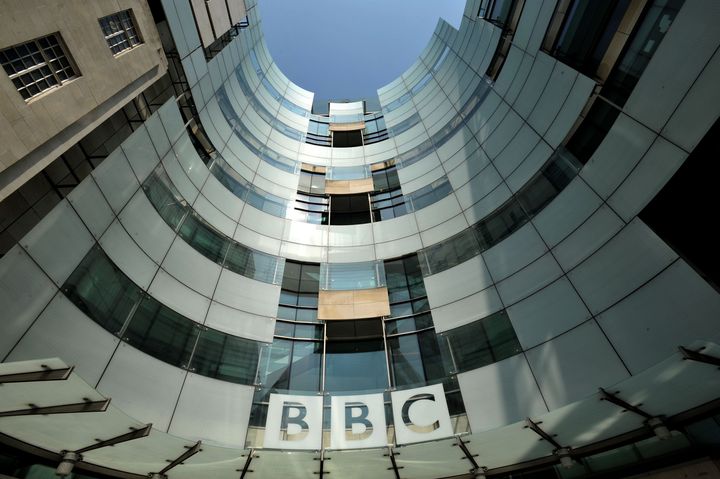
In late 2016, I came up with a system to increase female contributors on BBC programmes. It costs nothing, takes two minutes a day and is voluntary. I asked one programme to try it for one month. 16 months later, over 80 BBC programmes are doing it, it’s the biggest initiative of its type there’s ever been in the BBC – and it’s responsible for significant shifts in the make-up of our programmes. It’s called 50:50 and this is how it works.
I needed proof. It felt like many programmes, my own included, were stuck in a constant state of trying. We valued having as many women as men was important – but perhaps we’d also accepted that practicalities meant it wasn’t possible. For instance, there are fewer female politicians, business leaders, senior scientists and so on, and that creates genuine challenges.
I should add that these are challenges the BBC was already addressing. Our ‘Expert Women’ scheme has provided media training and routes into broadcasting since 2012. For five years, Fiona Crack’s brilliant 100 Women initiative has been showcasing women and their stories in BBC broadcasting around the world. And individually, many programmes were making their own efforts.
It wasn’t that we weren’t trying, but I was convinced we could shift from ‘trying’ to ‘doing’. I was equally convinced I’d only be credible if I could prove it. My programme is Outside Source (9pm simulcast on BBC News Channel in the UK and to BBC World News’ millions of viewers too) and it was the place to start.
I needed a system and decided its engine would be data collection. I was certain that if teams measured who was in each of their programmes, and then shared the results among themselves immediately after broadcast the effect would be potent; making us think about the issue every day and replacing our perceptions with a reality check.
In addition I was determined to make the system fair to help other teams buy into it. So I focused on what programme-makers really control. We wouldn’t count presenters (they are controlled by the network, and are counted elsewhere) and we wouldn’t count what I called ‘players’ – anyone with a direct connection to the story that day such as a politician, an eyewitness or a spokesperson and who programmes have to include. Everyone else, BBC or otherwise, would count as one. We’d count across a month to allow for the ebb and flow of stories and guests. That was it. Outside Source is an hour; it takes a minute to measure.
My experience of having a programme monitored is that it can feel like an outsider pointing out your shortcomings. So my system would be entirely voluntary – and programmes would monitor themselves if they took part. Before any of that I could happen, I needed my proof.
‘Shall we try this for a month?’ I asked my producers.
And so we began.
In January 2017, 39% of Outside Source’s contributors were women - lower than we’d thought it would be. The team’s motivation levels though were a different story. The daily act of measuring had transformed us and, led by two of my producers Jonathan Yerushalmy and Rebecca Bailey, we resolved to shoot for 50:50.
We established one clear rule: the best guest always go on air. This would not be journalism by quota, it would be an effort to improve our contacts and to identify subjects where we almost always talked to men and find some brilliant women as alternatives.
In February, 44% of Outside Source’s contributors were women.
In March, 47% of Outside Source’s contributors were women.
In April, 51% of Outside Source’s contributors were women.
And we’ve continued.
Since April of last year, we’ve averaged 52% each month.
We had the proof. We had also had the ratings. Outside Source is up 25% in the UK in the last two years. This lanced any flawed suggestion that changing our approach to contributors in any way jeopardises quality or success. In fact the opposite appears to be true.
By the summer last year, things started to expand. I’d hoped we’d create a self-supporting network of programmes that would pool data once a month to create a little amicable competition – and we’d share contacts and best practice too. Slowly it began to happen. To my intense excitement, the small group of new programmes doing 50:50 started to see their numbers shifting too.
And we started using what I’ve since learned is called ‘devolved data collection’. Programmes were able to adapt the measuring system to match their work. This was vital as we became an increasingly diverse group. If programmes believed the system was fair to them it drastically increased the chance of them buying into 50:50.
Towards the end of 2017 and into this year, the programmes kept coming – from The Andrew Marr Show on BBC One to File on 4 on Radio 4 - and the gender balance figures kept moving.
At this point, I sent a speculative email to the BBC Director General wondering if 50:50 might be of interest. It was. Soon after that, I was sitting in Tony’s office and he was asking me where we could take this and how he could help. The impact of that meeting on 50:50 has been profound.
We now have more than 80 BBC programmes on board - they come from across News, Sport, Children’s, Documentaries, Politics, Science, Arts and a long list of broadcasts from BBC World Service including BBC Persian, BBC Russian and BBC Hindi. Some of them already have equal numbers of male and female contributors but the majority don’t. Remarkably though, among all of those programmes, every one which has measured for more than two months has improved its overall number of women contributors, some to a significant degree.
This April, the BBC News at Six and Ten and The One Show join 50:50. At the same time, Tony Hall has launched the 50:50 Challenge to see how far all of the programmes can get towards an equal number of men and women contributors by April of next year.
We still do the same system on Outside Source every single day but much has changed since we started. What felt like something extra in the early days has become a normal part of our working day. The whole process has made our programme much better.
This is something I hope can grow, not just at the BBC, but more widely. I’ll be in the US in May to talk with media out there about what we’re doing. So wherever you are, if you work in journalism and you’d like to get involved, please do get in touch.
Ros Atkins is presenter of BBC’s Outside Source
